Cleveland’s Prospect Music set to close after nearly eight decades

the modern automated world. Instead of dealing with a bartender, you swipe your credit card and ID. You are then given a wristband that activates automated beer and wine taps. Instead of paying per drink, the customer pays by volume of liquor poured.
The facade of the store now features in big blue letters “Everything Must Go.” The wall behind the counter once plastered with guitars now features eight holdouts. One, a vintage 1932 Martin ukulele, is a reminder of the glory days.
Cleveland Institute of Music Professor Don Better said he went to the store as a teenager during the 1960s to buy sheet music. Better said he and his friends would stop by the store every weekend to browse the inventory.
“It wasn’t cool by any means, but they had everything,” said Better. “I still have some sheet music I bought from them.”
Prospect Music was founded in 1941 by Jack Epstein. Michael Rubin bought the business in 1982.
Prospect’s autograph book features signatures from music legends like The Who’s Pete Townshend and John Coltrane
The business will close on Sept. 11 after 77 years
Rubin said the movement toward electronic instruments, online shopping and the City of Cleveland led to the business closing.
Youngstown bar Whistle & Keg is taking over the space.
Matt Hooke Arts and Entertainment EditorThe skeleton of Prospect Music casts a long shadow over Huron Road in downtown Cleveland. The autograph book, where legends like John Coltrane and The Who’s Pete Townshend commemorated their visits, will never again see the pen of another passing musician. After 77 years, Prospect Music is closing on Sept. 11.
Now the spot will morph from downtown Cleveland’s only music store to a bar, a branch of Youngstown’s Whistle & Keg Brewery.
“The City of Cleveland doesn’t need another beer joint, but that’s what we’re getting,” said Prospect Music owner Michael Rubin.
Unlike the old-fashioned Prospect, Whistle & Keg is a business catered to
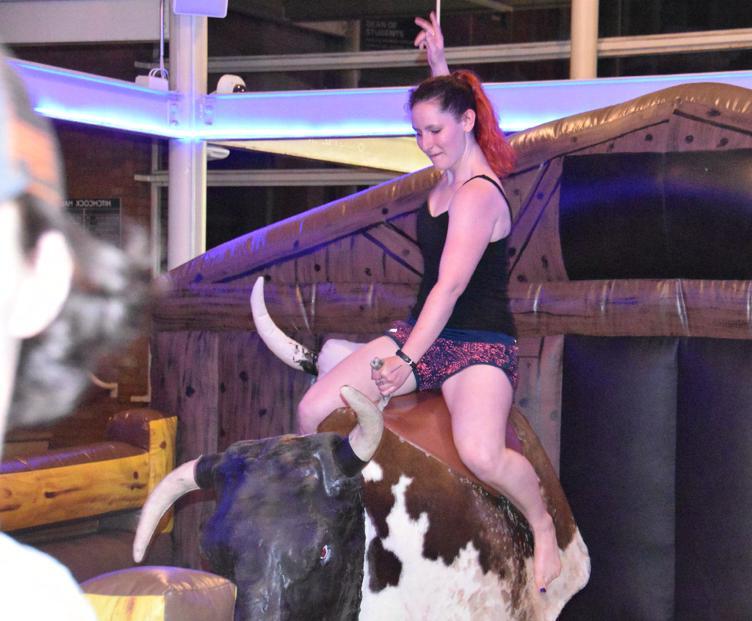
Rubin plans to stay involved with the local music scene through his band Blue Lunch and will now be the bookkeeper for his wife’s business Jerold Optical.
Since its founding in 1941 by Jack Epstein, Prospect Music has been forced to move twice. Its first location, on the street that gave the shop its name, got transformed into a bar and restaurant district, forcing Rubin to move to East 4th street. Five years later, Rubin moved again to his current location at 818 Huron Road in Cleveland. East 4th street transformed into the hip district that boasts Michael Symon’s Lola, House of Blues and the Corner Alley.
Rubin bought the store in 1982. He previously worked at Prospect during the late 70s as a salesperson while performing with local bands on the trumpet.
Several factors led to Prospect’s fall from grace, according to Rubin. For example, the increase in online retail, with websites like Amazon and Reverb
becoming the preferred stop for buying musical instruments. Rubin said he had difficulty adapting to the change.
Furthermore, the popularity of electronic music, with software and Musical Instrument Digital Interface (MIDI) keyboards replacing acoustic instruments, caused a reduction in the number of customers looking for the acoustic instruments Rubin specialized in.
“I don’t think I would have been happy becoming a store that sold electronic devices. I appreciate some of them, but I just don’t think electronic manipulation of sound has a soul,” said Rubin. “I don’t think you can make what’s in your heart come out with a sine wave.”
Rubin claimed that the city government has been the most significant negative external force affecting his business.
“I would target the city of Cleveland itself as being the biggest culprit. I’m not popular for saying these things, but a lot of people agree with me,” said Rubin. “The gentrification of downtown has killed retail. The parking rules that the city of Cleveland has come up with for no apparent logical reason has curtailed our customers’ ability to do business here.”
Rubin said his only regret is that Prospect is ending on his watch. He said spending over half of his life in the music business gave him the freedom to be his own boss and do as he pleased.
“I’ve met so many cool people, just regular down-to-earth Clevelanders. The ones I liked the best were the denizens of the street who would need a kazoo or a string for the guitar they would play outside,” said Rubin on his fondest memories of the store. “I met a lot of characters. If you had the opportunity to learn their backstory, it humanized them, and it made me more able to empathize with different people’s plights in life. It’s made me a better person.”
Spartigras brings O-Week to an end
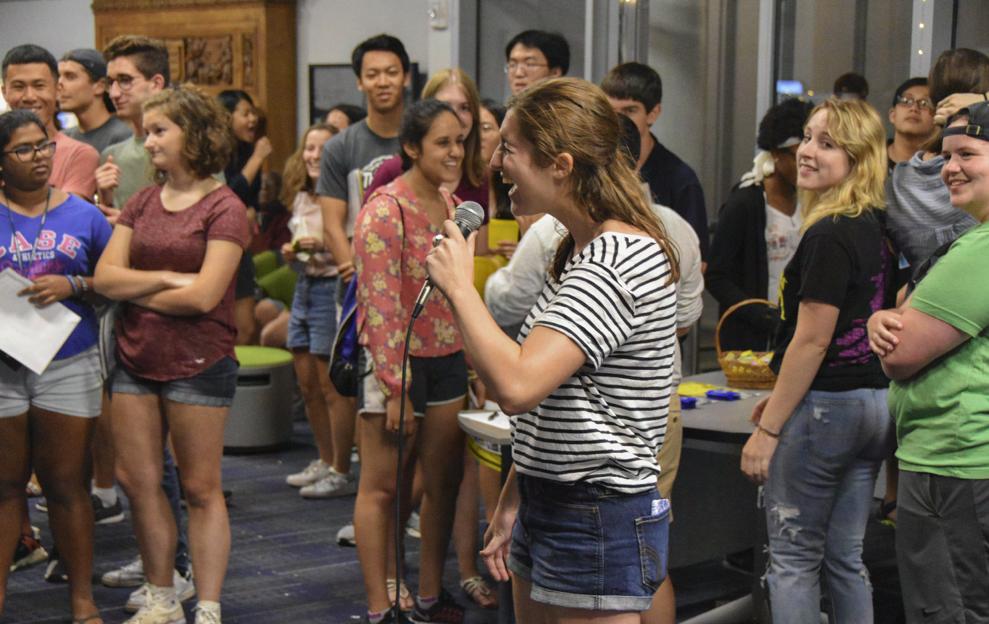
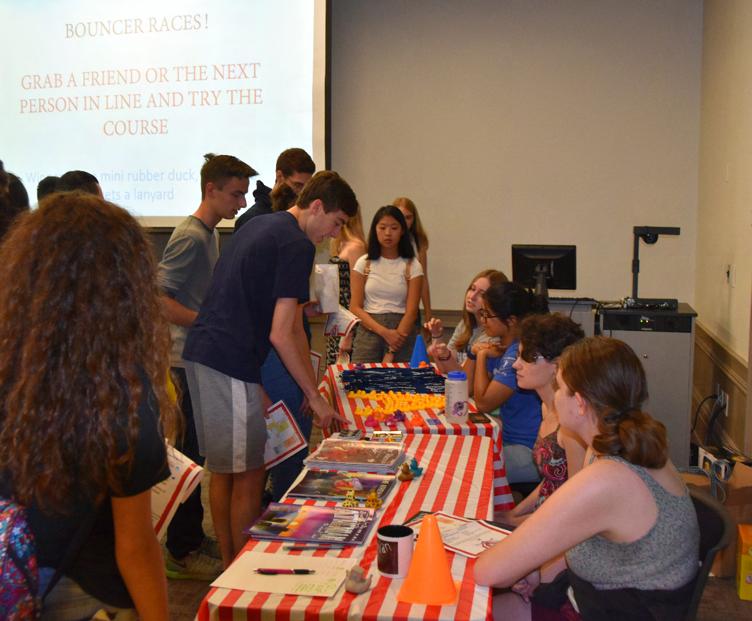
Student Activities Fair promotes student organizations
Members of various student organizations promoted their groups at last Sunday’s Student Activities Fair, which helps new students get involved with the CWRU community. The annual event also gives approximately 195 student organizations an opportunity to recruit new participants.
Brian Schnell Staff ReporterApproximately 195 student organizations were represented at the Kelvin Smith Library (KSL) Oval last Sunday, Aug. 26 for the Office of Student Activities and Leadership’s annual Student Activities Fair. The fair’s overall goal is to expose incoming students to the culture of campus involvement at CWRU and to foster a welcoming atmosphere.
First-year student Jack Chipman was pleased with this year’s event and looks forward to increasing his involvement with the community.

“I’m excited to join clubs on campus,”
he said after scoping out the dozens of booths. “There’s definitely something for everyone here.”
Student organizations on campus cover a broad range of interests, which aims to help students pursue their passions through extracurricular activities, community service and other means of participation on campus.
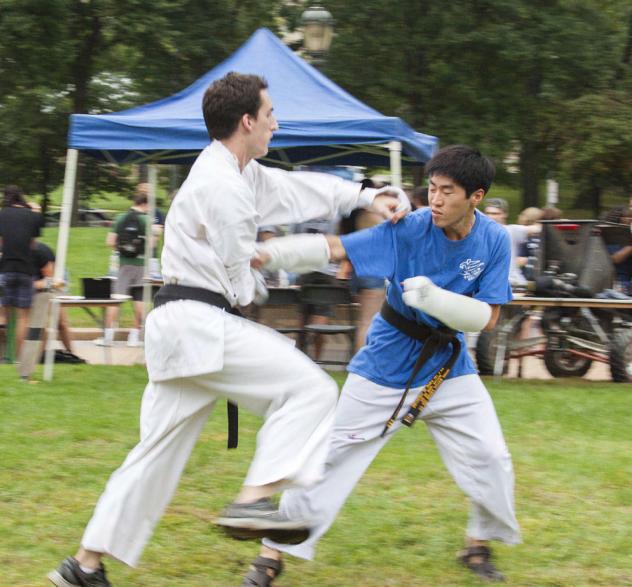
“We fill so many different realms of student interest, and it’s really cool to see them all come together,” said fourth-year student and Undergraduate Student Government (USG) Vice President of Finance Sydney Davis. She added, “Every year, we add around ten new student organizations, which really adds to the diversity of clubs on campus.”
This year, an Undergraduate Diversity Collaborative (UDC) initiative played a
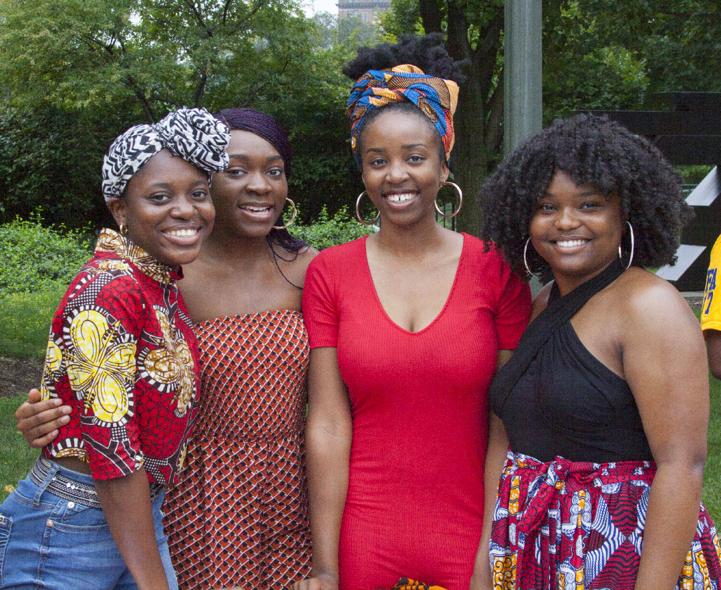
big role in the organization of the Student Activities Fair. In partnership with USG, the initiative aimed to further the diversification of groups on campus. During the fair, each student organization hosted a table where they presented information regarding their group and gave students the opportunity to sign up for email notifications.
With the significant amount of clubs and organizations present at the event, the line of tables circled around the KSL Oval and went onto Freiberger Field.
Second-year student and Taiwanese American Student Association Activities Chair Chloe Jen said, “I think being a part of organizations on campus helps you find your niche and find a place where you belong.”
Second-year Class Secretary Susan Wong
agreed with Jen. She added, “Some people find their identity in the clubs they join, so I think it’s really important to get involved.” Many students acknowledge how their involvement on campus has enabled them to find a sense of belonging at CWRU. While students may feel overwhelmed by the large amount of organizations being promoted at the fair, students eventually find the few clubs that will help them thrive as members of CWRU.
“Joining clubs enhances your experience because it lets you meet people from all walks of life that maybe you never would have met otherwise,” said third-year student and Juggling Club member Billy Markowitz. “I’m happy I tried things out and found a group of people that share my hobbies.”
New Amazon Locker system tackles delivery traffic
Sophia Yakumithis
News Editor
Amazon Lockers are becoming a popular option for universities nationwide. At Case Western Reserve University, the project was initially presented within University Housing in 2015 but was not installed until this month. According to University Housing, the Lockers address the exponential increase in Amazon delivery volumes over the past seven years.

The new stations, which were installed and are operated by Amazon, are intended to reduce the traffic of package deliveries in the North and South Residential Area Offices by restricting deliveries to Amazon-only orders. The lockers themselves, which are accessible 24-hours a day, also vary in size, further organizing packages.
David Brown, Assistant Director of University Housing, explained that after Amazon Prime memberships were made available to students for free in 2010, Amazon’s numbers of campus orders boomed; numbers of Amazon packages rose from just under 60,000 to a whopping 140,000 in the past several years. He added that those numbers have since levelled out, but traffic has remained an issue in the Residential Area Offices.
“Amazon deliveries account for about a third of our deliveries,” he said.
“We’ve added [Residential Area Office employees] and reorganized office space multiple times to accommodate the increase in deliveries.”
Once a student’s package physically arrives on campus, the student receives a notification which includes an access code indicating their delivery is ready for pickup. When the student arrives at the locker, a screen gives them the option
to enter the one-time access code. The locker with their package will open and they take the package out.
Residence Hall Association President Lucy Wan said that pursuing cutting edge technology, like the Amazon Lockers, is an important component in students’ campus experiences.
“Technological investment certainly does come up as a solution to many of the problems that we look at when it comes to improving the on-campus living
experience,” she said. “For example, we have been working with University Housing in order to get electronic key locks installed on the front doors of the Property Management Apartments to create a more secure system than the hard keys.”
While RHA was not directly involved with the Amazon Locker project, Wan said the organization has collaborated with University Housing in the past to provide feedback and suggestions about how to make delivery systems and systems like it more efficient. That includes last year’s installation of the Luxor delivery system, a walk-in room option for students in North Residential Village’s Wade Commons.
“Implementation of the Amazon Locker program is an example of University Housing’s continued effort to streamline operations and improve services for our resident students,” said Vice President for Campus Services Richard Jamieson.
Jamieson added that CWRU is looking to further its delivery technology by pursuing other programs not unlike the Amazon Lockers.
“The next phase of the packagehandling program will be installation of Neopost, a similar technology that will handle deliveries from USPS, UPS, FedEx, DHL and others,” he said.
An inside look at the Flora Stone Mather Center for Women
Katharine Toledo Staff ReporterAre you looking for candy, condoms or camaraderie on campus? Look no further than the Flora Stone Mather Center (FSM) for Women. The FSM Center for Women, now in its 15th year, opened in 2003 with the help of a $1 million endowment started by the alumnae of the Class of 1956.
Those visiting the FSM Center for Women are often greeted by a crowd of students who flock there between classes for a quiet study space, a cup of coffee or a handful of candy.
“Having students in our space is not only how we get to know you, but how we can better serve as a resource,” said Dr. Lisa Nielson, Director of the FSM Center for Women. “[Everyone here] has a great time working together and like to share that with everyone.”
The cornerstones of the FSM Center











for Women are intersectionality, inclusion, gender equity, diversity and open dialogue, labeling it as a safe space for all members of the Case Western Reserve University community. This year, the Center hopes to focus on fostering dialogue by listening to members of the campus community through various partnerships with other members of the greater Cleveland community.
In addition to collaborations with other campus organizations such as the Social Justice Institute, the Center for Civic Engagement and Learning and the LGBT Center, the FSM Center for Women is exploring partnerships with outside community organizations like the YMCA. This year, the Center is piloting a series of conversations called “Let’s Talk About…” as a part of a collaboration with Planned Parenthood.
The FSM Center for Women is also home to a representative from the Cleveland Rape Crisis Center, a non-profit organization
dedicated to helping those affected by rape, sexual violence or human trafficking.
The FSM Center for Women’s largest organization is the Women in Science and Engineering Roundtable (WISER). With over 200 undergraduate and graduate student members, WISER is one of the largest student groups on campus. In addition to hosting various events throughout the year, WISER is known for its mentoring program and community outreach events.
Other campus organizations affiliated with the Center include the Sexual Assault and Violence Educators (SAVE), the Feminist Collective Club (FCC) and PERIOD, a new campus organization dedicated to destigmatizing menstruation and providing free menstrual products to the community.
New to the Center this year is Men and Masculinity. The student-run group plans to partner with the FSM Center for Women and CWRU Greek Life to host a series of dialogues dedicated to the topic
of masculinity and its role in different groups and contexts.
Next week, the FSM Center for Women will host its annual SEXPO, a celebratory event aimed at reducing stigma surrounding sex. SEXPO, now in its third year, is designed to educate students about sex, intimacy, sex positivity and healthy relationships. SEXPO features members of various campus organizations as well as off-campus representatives from Planned Parenthood and other organizations.
Additionally, in October, the FSM Center for Women is teaming up with LGBT Center to host a multilingual poetry reading and celebration for the famed Chicana activist Gloria Anzaldua. Later that month, WISER is teaming up with La Alianza for a discussion panel about Latina engineers.
The FSM Center for Women said that students wishing to get involved are encouraged to join one of its affiliated groups, stop by the office for a visit or attend a program hosted by the center.
Origins Club is a diverse group of students interested in evolution, cosmology, astronomy and other origins topics, especially Origins Science majors. Many of us work closely with faculty in a variety of areas from lab science to field biology and paleontology. Some of us have traveled to do fieldwork in the deserts of Mongolia, the jungles of South America, and the remote outback of Turkana, Africa. You can too.
Join us in Courses this Fall:
e n c e o f O r i g i n s w o n d e r s i f t h e m o o n c o u l d b e a d e t e c t o r f o r d a r k m a t t e r … “ F o r a l o n g t i m e p e o p l e t h o u g h t t h a t d a r k m a t t e r w a s s m a l l p a r t i c l e s f l y i n g t h r o u g h m a t t e r , b u t w h a t i f d a r k m a t t e r i s s u p e r d e n s e a n d c o m e s i n r e a l l y b i g c h u n k s ? I f t h a t w e r e t r u e , t h e n t h e r e w o u l d n ’ t b e v e r y m a n y c h u n k s a r o u n d . T h a t m e a n s y o u ’ d n e e d a r e a l l y b i g d e t e c t o r , j u s t t o h a v e a g o o d c h a n c e t h a t o n e w o u l d h i t i t . W e p r o b a b l y c a n ’ t b u i l d a d e t e c t o r t h a t b i g , b u t m a y b e t h e m o o n a l r e a d y i s o n e . T h i s t y p e o f d a r k m a t t e r w o u l d f l y r i g h t t h r o u g h t h e m o o n ; k i n d o f l i k e s h o o t i n g a b u l l e t t h r o u g h j e l l - o . Y o u e x p e c t t o s e e a h o l e o n o n e s i d e , y o u e x p e c t t o s e e t h e j e l l - o j i g g l e , a n d o n t h e o t h e r s i d e , y o u e x p e c t t o s e e t h e j e l l - o t o g o f l y i n g o u t i n a b i g s p l a t . W e c a n l o o k f o r t h o s e s p l a t s o n t h e s u r f a c e o f t h e m o o n , w e c a n l o o k f o r t h e h o l e s , a n d w e c a n l i s t e n for the jell-o wiggling.”
ORIG 101 “Life, the Universe & Everything” (1 credit, Tues 2:30-3:20)


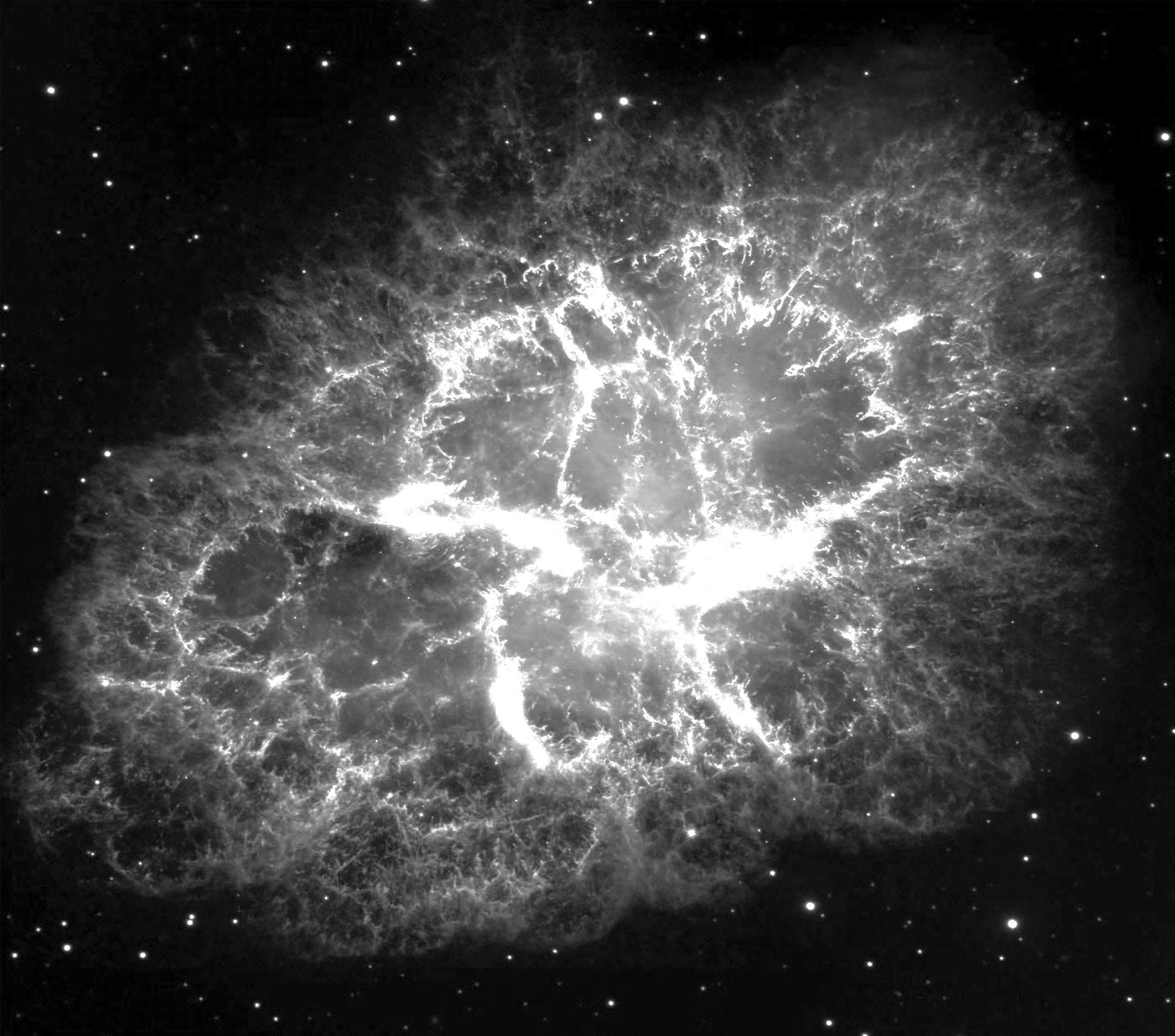
ORIG 202 “Life in All its Diversity” (meets at CMNH, Mon 2:15-3:45 +paleo lab) SAVE The DATE! Jurassic Park geekfest Oct 12, 5-10pm, Strosacker. Paleontologists, Fo

H o w D i d Y o u G e t H e r e ?
W h e r e A r e Y o u G o i n g ?
Ariana Grande’s “Sweetener” is what we needed
Sophia Yakumithis News EditorAriana Grande is talented. Like, really talented. On Aug. 17, the four-octave ranged soprano dropped her latest album, “Sweetener,” and it changed my life.
“Sweetener” is Grande’s first project since the suicide bombing at a Grande Manchester concert last year killed or injured over 100 audience members. Since then, the artist has laid low and fans have waited to see how soon, or if, she’d recover from the trauma.
Grande’s highly anticipated comeback began when she headlined One Love for Manchester, a benefit concert for the victims of the bombing. After a short break, she zoomed back into the spotlight, stole our hearts and dropped one of this year’s hottest albums.
In “Sweetener’s” first week, it jumped to the top of the Billboard 200 list, and its first two singles made the Hot 100’s top 10 list simultaneously. “God Is a Woman” clocked in at No. 8 and “No Tears Left to Cry” at No. 7, while several other tracks trickled down the list. Clocking in at 37 seconds, the acapella “Raindrops (An Angel Cried)” breaks the world record for the shortest audio recording of an artist depleting my self confidence with only a few vocal riffs. This short track sets the tone for the album—this girl is not here to play games.
Next, Grande channels her inner Grimes in “The Light Is Coming” featuring Nicki Minaj. Let’s be real: the synth-pop-meets-trap-meetsexperimental music video is a major flop. I love that she took creative liberty with bouncy and squawky vocals, but it did not work with the hopeless romantic dreaminess that domi-
nates the album. Minaj is in it, though, so it’s chill.
For anyone late to the party, “God Is a Woman” made the world believe in something it needed to believe in. Grande harmonizes with several layers of her own vocals, in arguably her most mature vocal performance to date. This song is angels kissing my toes; it’s floating on a cosmic blanket; it’s an out-ofbody experience. “Breathin’” is like Grande’s other Top 40 hits. Its upbeat, R&B overtones relies on “yuhs” and Mariah Carey-esque vocal acrobatics to make it worth listening to. Her impossibly wide vocal range compensates for the song’s predictability, a predictability that I would argue is necessary bubblegum pop to balance out the album’s trap tone.
While it reflects the anxiety and vulnerability she experienced following the Manchester tragedy, “No Tears Left to Cry” is an ode to the happiness in her life. Grande wants to start fresh, make a comeback and celebrate the good vibes she surrounds herself with or at least tries to surround herself with. It also pays tribute to the 90s girl-power artists like Madonna and Celine Dion that inspired her.
Although “Sweetener” is littered with random experimental synth music, Grande has made a comeback worth bowing down to. This is easily her most impressive work to date, and in just half a decade she has a discography worthy of a seasoned veteran.
I can’t wait to see where her career takes her, and us, next.
Artist: Ariana Grande
Album: Sweetener
Release date: Aug. 17
Rating:
arts & entertainment
“Be The Cowboy” could be better
Mary McPheetersMitski released her fifth album “Be The Cowboy” to critical acclaim in midAugust, just two years after the release of “Puberty 2.” Despite several standout tracks, the album ultimately fails to live up to its potential. The seemingly random song order makes the project feel like a collection of singles instead of a coherent whole.
The album opens with the single, “Geyser.” The song is the first glimpse of a departure from the instrumentation of “Puberty 2.” Rather than the raw guitar that spanned most of “Puberty 2,” this record features synthesizers and a return to the classical piano that Mitski used in her first two albums, while also featuring a fair amount of horns and percussion.
“Be The Cowboy” also differs from Mitski’s previous work in that it does not have layered vocals. This is intentional, as part of Mitski’s inspiration for this album was the idea of someone singing alone on a stage.
Unfortunately, it is difficult to decipher Mitski’s narrative. Although the vocals are toned back, most of the songs feature far too many instruments to feel like Mitski could be playing all of them and singing by herself on stage. On the bright side, the album does not lose much without this narrative.
One of the standout tracks on the album is the single “Nobody.” Mitski pairs lyrics about being lonely and estranged with upbeat disco music. This juxtaposition makes “Nobody” extremely relat -
able and catchy.
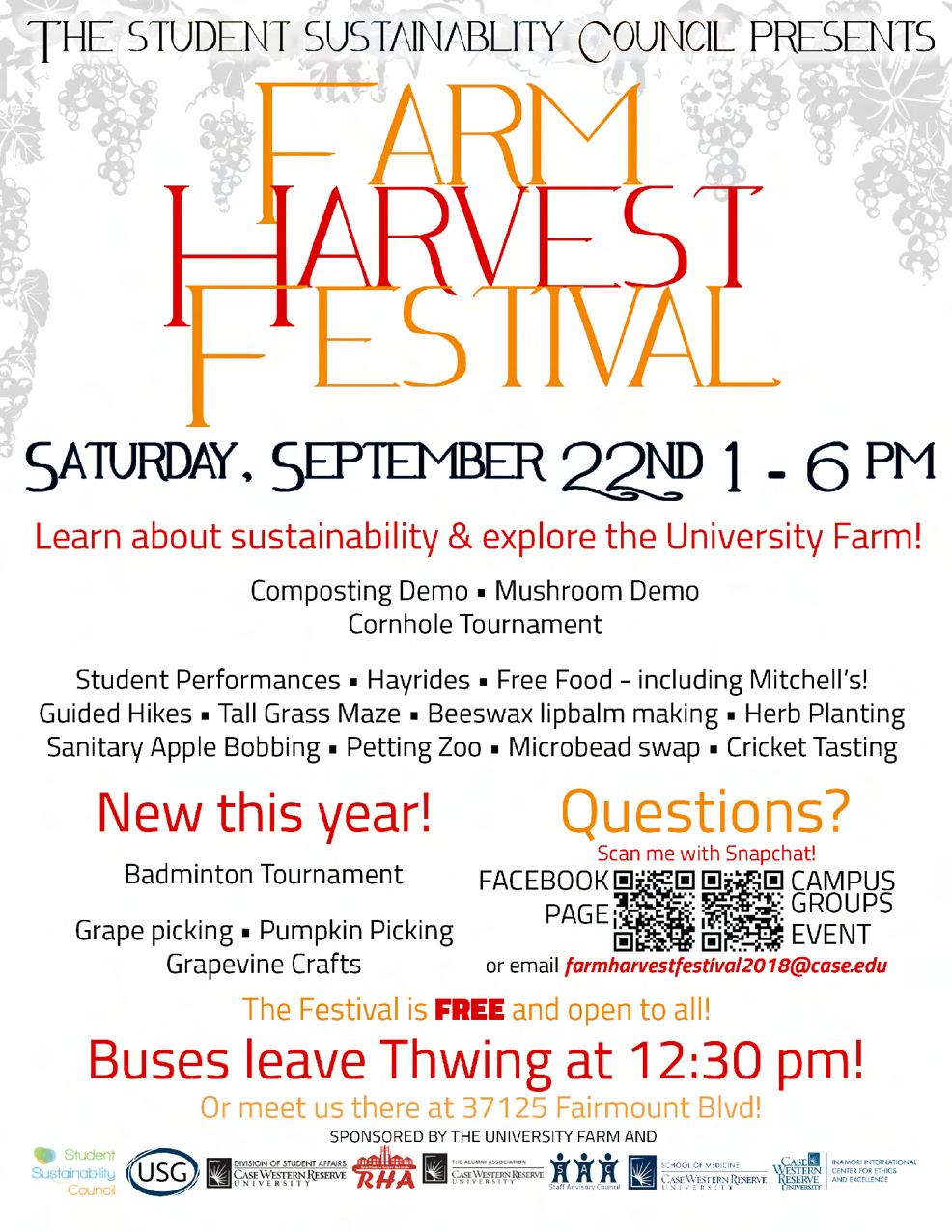
Another standout is “A Horse Named Cold Air.” In the song, Mitski sings about someone looking back on their life to discover that they have “circled the same old sin.” The emotion behind these lyrics combined with relatively simple piano accompaniment creates a heavy-feeling, somber song.
“Washing Machine Heart,” a more upbeat piece, follows “A Horse Named Cold Air” and highlights some of the issues with the album. The change from sad to upbeat song feels abrupt and unsatisfying because there is no transition between the two.
Mitski’s lack of transitions mars much of the album. Despite multiple songs with similar instrumentation, such songs are not grouped in a way that showcases their commonality. The overall lyrical content of the album has a similar problem. In general, the song lyrics on “Be The Cowboy” do not come together in any cohesive way. The ordering of songs almost highlights this lack of cohesion. Individually, all of the songs on the album are decent, but not all of them fit with the track that precedes or follows them.
Overall, “Be The Cowboy” is a solid album, but it could benefit from ordering the songs to tie them together rather than ordering them in a way that feels random.
Album: Be The Cowboy
Artist: Mitski
Release: Aug. 17
Rating:
Twenty One Pilots return from hiatus with new singles
Julia Knight Staff ReporterWorld-famous alternative rock band Twenty One Pilots has officially resurfaced after a one year hiatus. The grueling lapse left many fans anxiously awaiting a new release. This summer, it finally arrived. The trending singles “Jumpsuit” and “Nico and the Niners” debuted on July 11.
“Jumpsuit” lures listeners in with lowpitched, fast-paced guitar riffs and bopping beats by acclaimed drummer, Joshua Dun. The energetic style is quickly contrasted by Tyler Joseph’s vocals, which enter subtly and leave listeners anticipating what is to come. As many long-time fans have come to know, Twenty One Pilots often mesh two, or even three, starkly different melodies within one song. “Jumpsuit” is no exception.
Fans ate up the single, which hit No. 6 on the July 21 edition of Billboard’s Hot Rock Songs Chart. “Nico and the Niners,” claimed the No. 9 slot that week, with a steadier beat than “Jumpsuit.” Minor-key ukulele riffs give the track an eerie vibe.
“Levitate,” a spoken-word piece and the final installment in a three-part story from the upcoming album “Trench,” quickly followed the release of “Nico and the Niners.” Music videos on the band’s
YouTube channel accompany each new single, giving way to a connected narrative, which the band leaked prior to the release of the songs.
A GIF on the Twenty One Pilots official website in April revealed a link that lead frenzied fans on a virtual scavenger hunt to seek out clues about the future album. The site directed users to journal entries from a character named Clancy who details his rebellious journey through the fictional Trench.
The band unveiled their newest song on Aug. 27. “My Blood” boasts an underlying funk vibe and a modern melody. Joseph voices poetic lyrics, which break the fourth-wall between him and his audience. The inviting words allow listeners to establish a personal connection with the singer.
This intimacy is nothing new for Joseph and Dun. Many return to their music time and time again for their energetic tracks and ingenious lyrics.
Along with the new music and narrative came an announcement of tour dates, beginning in October. Tickets sold out for nearly all U.S. sites within moments of going on sale. Devoted supporters now eagerly await the release of “Trench” on Oct. 5. Given the success of their new music, “Trench” will likely live up its newfound hype.
Copy Editor
Revamped Spartigras draws large crowds
Henry Brandon Staff ReporterStudents trickled into the Thwing Ballroom on Saturday night and spread out across the room for Spartigras. They were drawn towards the cotton candy station, shaved ice machine and the chance to throw darts at balloons.
The balloon station held a particular fascination due to its surprising difficulty. The darts would glance around the balloons or fail to puncture the rubber despite being right on target. Students gathered in small groups around the board as a respite from a busy Orientation Week that doubled as a chance to try to impress their new friends.
Spartigras is the annual end-of-orientation week carnival that serves as an opportunity for students to meet the members of the University Media Board (UMB). (The Observer is a member of UMB).
Planning for the event began in May.
UMB Chair Jahlyn Reyes-McKinley said work started early to finalize contracts and ensure the necessary equipment arrived to create the right experience for incoming first-year students.
“We wanted it to be a fun addition to Orientation Week,” said Reyes-McKinley. “[We] wanted to create an event that was fun for freshmen and that if you see it you’d have an opportunity to play games and fall in love with our [organizations].”
By all accounts, Reyes-McKinley and the entire Spartigras team succeeded. They filled the Thwing Center with booths from groups like the Athenian, and WRUW. The team created a raffle filled with stickers from every organization that was well received by many of the new students.
“Some of the booths were a little crowd-
ed, but that was to be expected,” said Marissa Lahr, a first-year student. “[The party atmosphere] made everyone more comfortable and that way you could just go up to groups and start talking to people.”
Other highlights included the Case Western Reserve University Footlighters first-floor karaoke booth. Olivia Laniak, a first-year student and music major, said that while she and a friend came for funnel cakes, which they were unable to find because there were none, they stayed for the fun. She completed a rousing rendition of Sia’s “Chandelier” and left the
Footlighters’ room to a decently sized ovation before heading back out into the rest of the event.
Some students, despite enjoying the event, felt the event’s structure made it difficult to interact with UMB members.
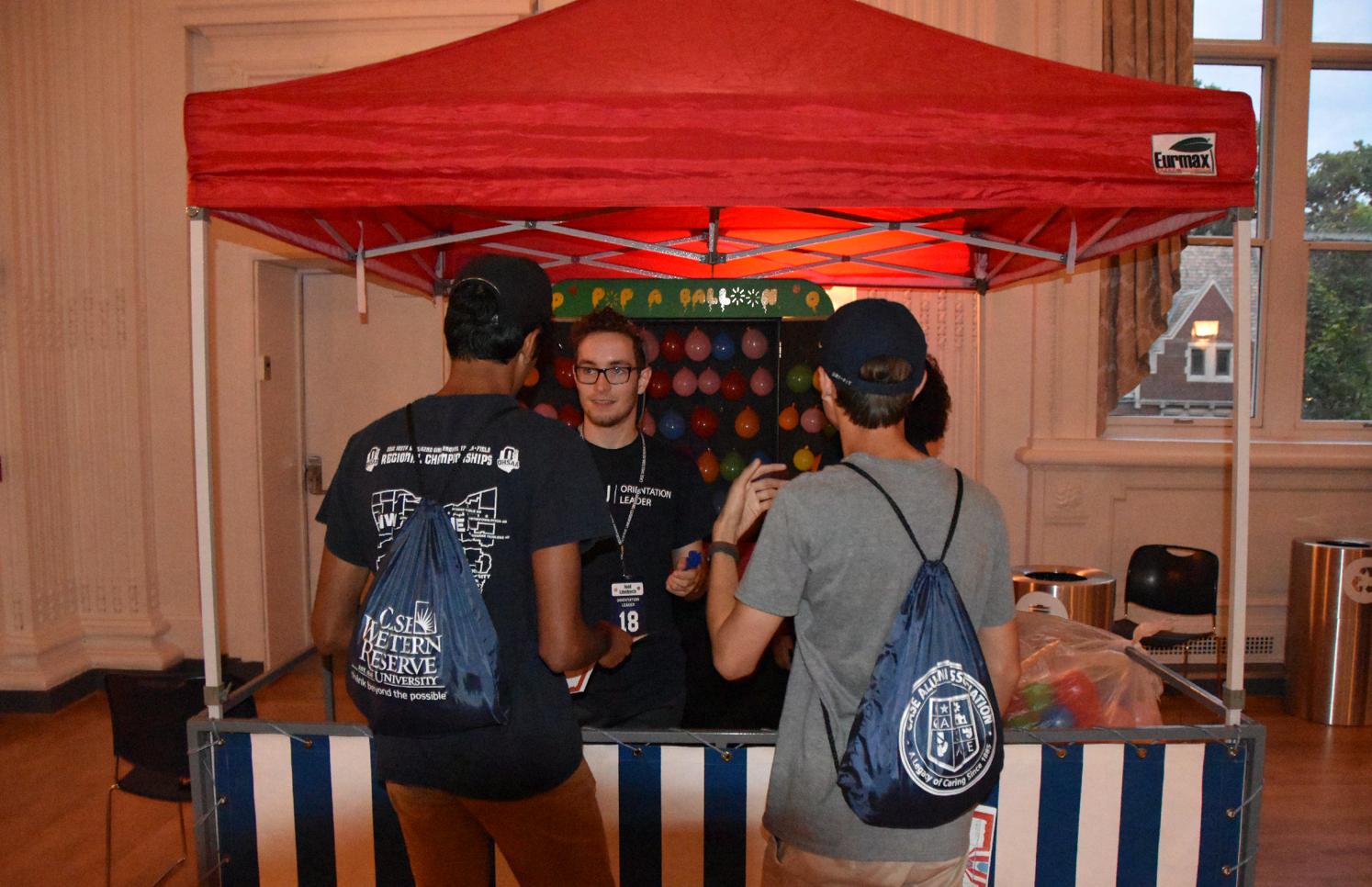
“I’d prefer to meet (UMB student organizations) in a non party environment in the future because it’s kind of hard to focus with all the stuff going on around,” said Jose Koluder-Ramirez.
Despite his misgivings, KoulderRamirez still enjoyed the event as a whole. He described the event as cool, and said
the UMB members seemed outgoing. As the night came to a close and the line for the mechanical bull in the Thwing Atrium slowly diminished, the staff members working the door reflected on how popular Spartigras had been. As of 9:35 p.m., roughly 620 people had entered through the backdoor alone, putting attendance estimates from incoming first-years above 650 people.
Reyes-McKinley said UMB is considering expanding the event to the third floor of Thwing next year to accommodate the large public interest.
Annual Greek festival engages all of the senses
Aura Rossy Staff ReporterOne of the most prominent features of Cleveland’s annual Greek Festival from Aug. 23 to 26 is the music heard from a few blocks in either direction of Saints Constantine & Helen Greek Orthodox Cathedral on Mayfield Road. When you walk towards the cathedral, the source of the music, Greek bands, comes into view.
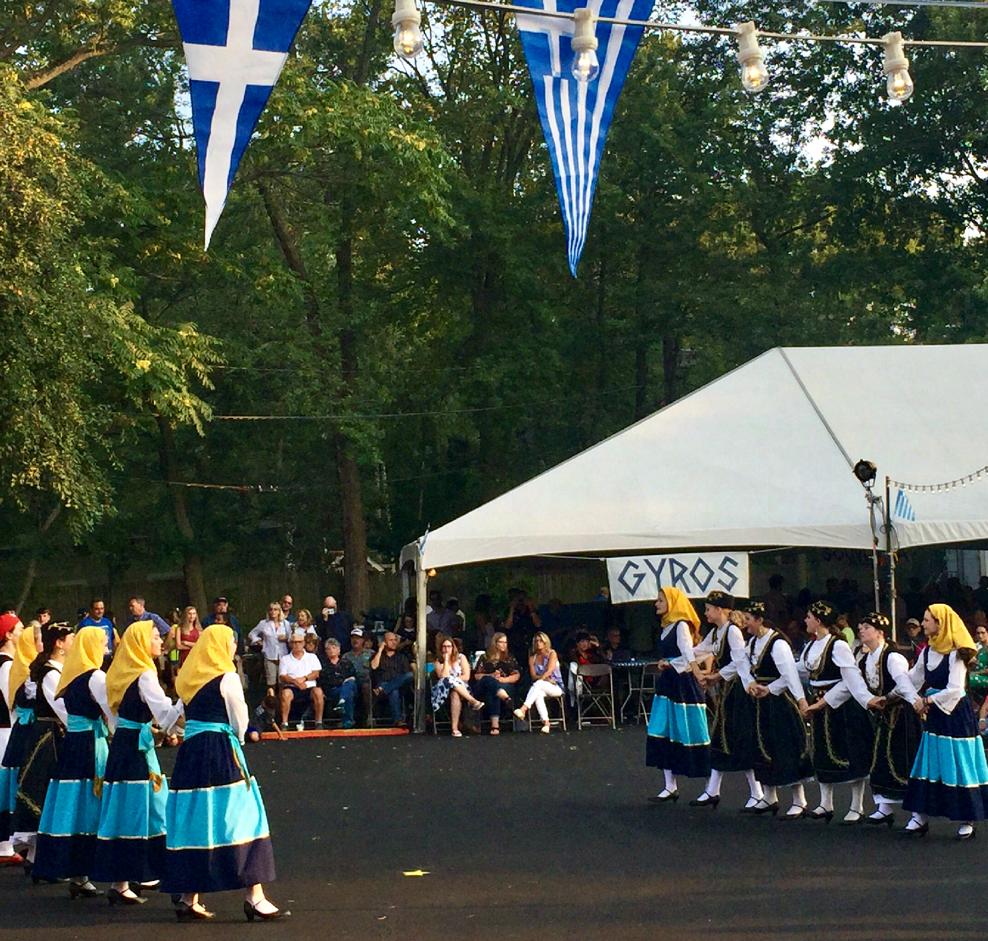
Once you reach the crowd, you see another highlight of the festival: a group of dancers. The dancers are young members of the cathedral who dedicate their time to mastering the intricate steps of cultural dances that connect them to their roots, countries away.
Surrounding the group is an array of white tents with giant text advertising the food under each roof. The mouthwatering aromas hover like a cloud over the lot and flood into the cathedral, where the other half of the festival activities are housed.
Upon first entering, you come across additional food that ties the outdoor and indoor festivities together. Some of the featured dishes from Greek cuisine include pastitsio, moussaka, spanakopita and tiropita, perfectly complemented by what seems like an endless supply of sweet Greek delicacies such as baklava
and finikia, a butter cookie soaked in honey and topped with nuts. If one dessert does not satisfy your cravings, there are free cooking classes, where you can learn how to replicate classic dishes in the comfort of your own kitchen.
After indulging in all the food you can eat, you can explore the hallways of the cathedral, which are lined with rooms open for festival attendees. Each room houses shops selling a variety of imported Greek jewelry, artwork and ceramics. Aside from perusing the variety of options, you can use the opportunity to engage in a chat with one of the knowledgeable parishioners working the station, who may be from Greece or have a travel tip to share with curious listeners.
Former youth dancer Christina Kerner is one member who shares a connection to Greece and her culture through the cathedral. Kerner’s mother’s family is originally from Crete, Greece’s largest island. After being baptized as an infant, Kerner began participating in the annual dances at the age of 10. She danced with the cathedral for seven years. Despite living away from home for her college career, she still returns to the festival each year.
In the second set of dances each evening of the festival, the senior dancers perform a dance called “Horos tis Mahis tis Kritis” or “The Dance of the Battle of Crete.” Her family’s Cretan roots
Playlist of the Week
Kyle Smith Staff ReporterThis summer, rap artists new and old dropped too many tracks to count. Even though classes have started, here is a recap of some of the best this summer had to offer to keep the feeling going.
“65th & Ingleside” – Chance the Rapper
It has been a long time since Chance the Rapper dropped any solo projects. That changed on July 18th with the release of four new singles, including “65th & Ingleside.” The song recounts the early days of Chance’s relationship with his fiancee as Chance admits to being unfaithful and irresponsible with his young family. The chorus, a loop of London rapper Peter Cottontale singing the phrase, “There’s a way, out of no way. Swear I know everything’s gonna be okay,” gives an uplifting, hopeful feel to the songs sometimes regretful lyrics.
“Reborn” – Kids See Ghosts

It has been impossible to avoid Kanye West’s name recently as he produced an astonishing five albums in June. “Kids See Ghosts,” a seven-track collaboration with Kid Cudi, is a powerful statement from two rappers whose popularity has been waning in recent years. “Reborn” stars both artists at their best. The beat, a spacey mix of drum machine, synth, and distorted voices is classic West, and perfectly suits Cudi’s laid back rhymes.

Catch a concert or show this weekend
Mary McPheeters Copy EditorFriday, Aug. 31
What: Front Porch Concert Series: The Chris Vance Quartet
When: 7-9 p.m.
Where: Lakewood Public Library
Notes: This free, outdoor jazz concert is perfect for a picnic with friends and family. If there is inclement weather, the concert will be moved to the library’s auditorium.
What: Late: A Cowboy Song
When: Friday and Saturday. Doors: 7 p.m.
Performance: 7:30 p.m.
Where: Eldred Black Box
Notes: Case Western Reserve University’s theater department presents its annual welcome back show. Free Admission.
What: UPBeats: Rap Night
When: 8-11 p.m.
Where: Tinkham Veale University Center
Ballroom
Notes: Turn up with Aminé at the first UPBeats of the semester. Tickets are available for $5 on CampusGroups for Case Western Reserve University students. Each student may purchase one additional ticket for a guest. Doors open at 7:45 p.m.
Saturday, Sept. 1
and Monday
Where: Burke Lakefront Airport
Notes: This Labor Day Weekend tradition features aerial stunts by the U.S. Navy Blue Angels. This year’s show includes a U.S. Air Force F-16 Viper tactical demonstration. If aerial stunts are not your thing, there will be interactive activities, aircraft displays and drones. Tickets can be purchased online or at the door.
What: IMPROVment

When: 10-11 p.m.
Where: Eldred Black Box
Notes: IMPROVment’s first show of the semester will directly follow the Theater Department’s welcome back show. It will be hot in the Black Box, so dress lightly.
What: The Rocky Horror Picture Show
When: 11:30 p.m.-2:30 a.m.
Where: Cedar Lee Theatre
Notes: This interactive screening of the cult classic film includes a pre-show and a live floorshow by Simply His Servants, a local floorshow cast. Tickets can be purchased online or at the door and prop bags can be purchased in the lobby before the show.
Sunday, Sept. 2
What: Cars in Cleveland
When: 11 a.m.-3 p.m.
“Hard Piano” – Pusha T feat. Rick Ross
“Hard Piano” is another release from West’s June production streak. This track from Pusha T’s “Daytona,” sees Rick Ross and Pusha T discussing their common story. From selling cocaine to selling platinum albums, they review the various problems and rewards that come from that lifestyle.

West’s genius production can be heard in the heavy piano-laden trap beats of the song. Behind the slow, deliberate flow of Ross, the beat falls away to a simple drum-and-piano loop, creating an effective break from the 808 trap-beats driving the rest of the song.
“SUMO|ZUMO” – Denzel Curry
The rapper behind “Ultimate,” one of the most energetic songs of all time, is back with more. Denzel Curry’s album “Ta13oo” dropped during the last week of July. Despite fierce competition, the album’s sheer energy makes it stand out among a crowded list of summer releases. “Sumo” demonstrates the manic ferocity that first earned Curry attention. The song is probably the only brag-rap featuring references to cartoons Avatar: The Last Airbender and Chowder alongside lines about selling drugs and killing people.
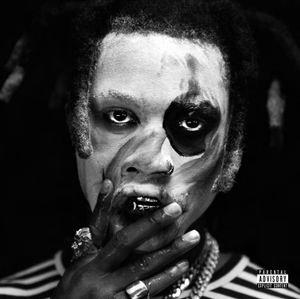
Find all these tracks online with our weekly Spotify playlist at observer.case.edu
Allphotoscourtesypluspremiers.us,genius.com,directlyrics.com,and
STUDY ABROAD FAIR


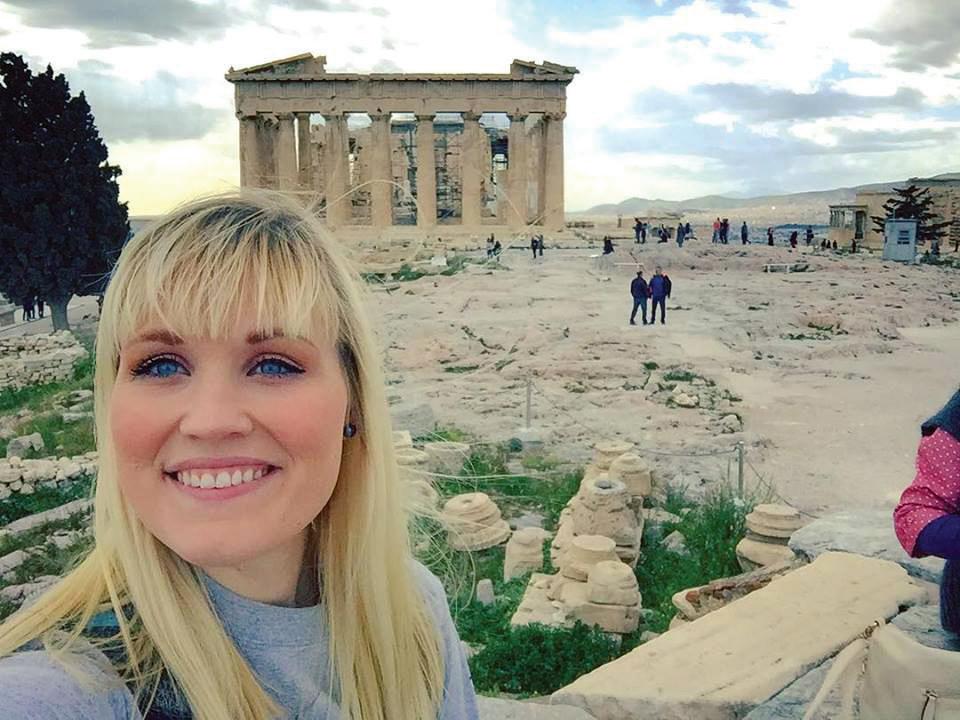
Word search
Can you find all these words related to articles in this issue?
This week we are exploring which dance move best represents your sign
Building problems lead to problems building community
For a few years, Case Western Reserve University has been especially focused on improving campus life for its students. It has pursued this goal through various renovation and reconstruction projects, with Uptown being the most obvious example. Along the way though, smaller additions such as new furniture in the residence halls, an app for tracking campus transportation and facelifts to halls such as Strosacker Auditorium have been highly effective.
But a little over a week into the new academic year, logistical issues have hampered the University’s residence life mission.
As The Observer reported last week, overcrowding issues with the incoming first-year class have transformed Clarke Tower into its own first-year residential college. The problems this created, however, mostly stand to affect the living experience of upperclassmen.
It is not new for second-year students in Clarke to be displaced and relocated to another residence hall, but the sheer volume of students who lost their rooms this year was unprecedented. Students were relocated to both the Triangle Apartments and Euclid 116 Apartments. In addition, a few firstyear housing groups were placed into the Stephanie Tubbs Jones Residence Hall.
These removals have introduced unexpected changes to second-years’ deliberate arrangements for the semester. Some found themselves far from Mather Quad and most of their courses, while others were suddenly separated from familiar housing groups and friends. The division between the North and South Residential Villages has already inhibited cohesion between classes. Unexpected changes to second-year housing only serves to create communal fractures within classes as well.
This is not, however, meant to discredit those who staff the residential
programs. CWRU has created a highly effective vetting process that has generated fantastic Resident Advisors for years which has enhanced many aspects of campus living. But this does not change that the current structure of houses like Clarke Tower isolates second-year students to a living community designed for and around first-years.
On top of these student distribution issues, CWRU has struggled to make other modernizations smooth. Renovations have become frequent, with some of them bleeding into the academic year and causing headaches for students across campus. The planned overhaul of Fribley Commons would put the only dining hall on the south side of campus out of commission for most of the semester. More rehearsal space is being added to Denison Hall, which conflicts with long-term plans to remove the outdated building altogether.
The University has made clear through both its Master Plan and the Provost’s Commission on the Undergraduate Experience that it wishes to enhance undergraduate living in the future. Its current upgrades are steps in the right direction, but it needs to avoid complications that worsen the experience for its present student body. With the expected renovations coming to the North Residential Village, it is critical that CWRU avoid making similar mistakes when executing this overhaul.
It is not easy to create a pleasant and supportive residential community. This year’s issues of overcrowding and renovation delays are unlikely to recur, but they have definitely clarified how fragile these communities are. If living situations are made less nebulous, then CWRU will accomplish its goal of making this campus a great place to live, not just to learn.
Prosecute him, not them
If you’ve watched the news at all over the past two months, you’ve heard the name Mollie Tibbetts. On July 18, the 20-year-old went for an evening jog in her small town of Brooklyn, Iowa. She didn’t come back.
After family and police spent a month searching, airing public television pleas and hoping for the best, there was a breakthrough in the case on August 21. Mollie Tibbett’s body had been found, and Cristhian Bahena Rivera had been arrested and charged with murder.
But forget the fact that a young woman died. Let’s talk about immigration policy instead.
Politicians have become fixated on Rivera’s status as a Mexican undocumented immigrant. They’re using Tibbett’s death as an opportunity to point fingers at old Democratic immigration policy and demonize illegal immigrants.
Unsurprisingly, President Trump had something to say on the matter: “You heard about today with the illegal alien coming in very sadly from Mexico,” he said on August 21—the day the body was discovered and before anything had been officially confirmed—at a West Virginia rally. “And you saw what happened to that incredible beautiful young woman. Should have never happened. Illegally, in our country.”
Right now, Mollie Tibbetts’ death shouldn’t be a point of propaganda. This is a time of mourning for her family and a time to seek justice against her killer. Maybe to some this seems like a wonderful opportunity to validate the inhumanity of the ICE detention centers and the zero tolerance policy. If illegal immigrants are all felons, is it really so bad? If anything, shouldn’t we be harsher so they can’t commit these crimes in our country?

There is a reasonable argument that “better” immigration laws would have detained and deported Rivera before he was able to commit the crime.
But Rivera didn’t have a criminal record that we know of. He was in good standing at his workplace, and he got

along with his coworkers. There was no obvious reason why he should have been detained up until this point, other than being undocumented.
Using Rivera as an example for why we need stricter illegal immigration policy implies we need to detain and deport everyone, regardless of whether or not they have a criminal record. This includes women, children and the thousands of illegal laborers that business owners rely on for keeping labor cheap. One such laborer was Rivera. Prior to his arrest, he was employed with minimal background checks on a farm owned by a prominent Republican—one who advocated for harsher immigration policy. But that’s an issue for a different article.
And regardless, the idea that all illegal immigrants must be deported because they’re criminals at heart simply is not true.
The national violent crime rate has been steadily falling for years now. Meanwhile, the number of illegal immigrants crossing the border has been increasing.
A study in Texas, the state with the second largest immigrant population, showed that native-born U.S. citizens are
more likely to commit and be convicted of violent crimes than undocumented immigrants. In fact, the conviction rate for illegal immigrants is about 50 percent lower than that of native residents. The idea that immigrants bring crime with them is a myth.
Rivera is yet another instance of us generalizing, as we so love to do here in the United States. Every member of a minority group is automatically a representative for that whole group.
Let’s be honest: if Tibbett’s killer had been a white man, would we have started making generalizations about how white men are violent and prone to murder? White men do statistically have higher rates of violent crime.
But no, we don’t make those assumptions. So why do we make the same generalizations in this instance? We need to get back to the real matter at hand: Mollie Tibbetts was murdered. Her killer was one man, not the whole undocumented immigrant population of the United States.
Prosecute him, not them.
Impeaching Trump: how Republicans stand to gain
Recently, former Trump campaign chairman Paul Manafort was found guilty of eight of the 18 charges levied against him by the U.S. Attorney’s Office. Among the charges brought against Manafort were multiple forms of tax evasion and fraud on the federal level. The prosecution exposed Manafort’s decadent lifestyle, one that he paid for by cheating financial institutions and avoiding taxes. Michael Cohen, former Trump lawyer and “fixer”, was also found guilty of similar charges, along with campaign finance violations that point to foreign involvement.
Previously, I’d given up on the possibility of a Trump impeachment. However, now we should pay attention to hints of an impeachment in the works, as a Republican Congress could take this drastic step. Cohen, Trump’s former lawyer, indicated that he’ll cooperate with the Robert Mueller-led Special Counsel investigation to receive leniency, and one can bet on Manafort doing the same once the reality of his 80-year prison sentence sinks in. Their cooperation with the Special Counsel investigation hints that impeachment would have tangible benefits for the Republican Party.
If Cohen and Manafort give evidence to Mueller of malfeasance on President Trump’s part, the GOP would be foolish not to impeach the president. They can’t risk supporting a man who has shaken up their platform and forced them to reverse a policy direction they felt comfortable moving towards. This is especially true in terms of policy on trade, citizenship and global security.
Tweets by the president about the economic effects of his impeachment are overstated. In the lead up to former President Clinton’s impeachment, the market dipped but recovered within a few months. An impeachment of President Trump does not mean the capital gains tax will triple, as he wants us to believe. In fact, his protectionist trade policy has consequences that harm the economy, especially for rural constituents and corporate farming donors. Impeachment would give the GOP more license to repeal tariffs, and possibly even outdated legislation which gives the president a dangerous amount of control over tariffs and duties.
Repealing tariffs and outdated legislation
The consequences of Paul Manafort’s trial
would have profound benefits: companies considering moving abroad might remain, and the agriculture sector would be able to increase exports. This would help the GOP keep rural voters, especially where draconian immigration enforcement and punitive tariffs have hurt farmers.
Further, they cannot risk a tin-foil hat defense of the president at a time when bluestate voters, otherwise satisfied with GOP incumbents, could be mobilized to protestvote against endearing centrist Republicans such as Gov. Larry Hogan of Maryland and Gov. Charlie Baker of Massachusetts. Refusal to accept debate on impeachment, and consequent opportunities for candidates to support or disavow it, could threaten Republicans in both swing and historically safe districts.
The GOP’s congressional candidates could be facing severe consequences with the Democrats finally getting their act together and nominating appropriate candidates in some winnable southern and mid-western races. Any un-accounted malfeasance could throw crucial moderates into their opponents’ arms.
Though it is clear that Republicans could stand to benefit from impeaching Trump, it is unclear that it will actually happen. Impeachment is a process that requires a two-thirds supermajority of the Senate. The Democratic minority caucus would likely vote for impeachment. There are over a dozen sitting senators in the GOP caucus who were or remain critical of Trump’s actions and policies. For many others, even if Trump is impeached, they already have won their primaries and will face safe general elections.
It is no secret that Sen. Mitch McConnell, R-Ky., loathes the president, who has tried to humiliate him on countless occasions. This is not to mention the purely policy-based gulfs between the two.
If he saw an opportunity to win tricky elections, and crown Vice President Mike Pence or another establishment Republican as the prospective 2020 nominee, I believe McConnell would whip his caucus into impeachment. This would render Trump a lame-duck, restricted to feeble Twitter meltdowns by insurmountable veto power.
Leo R. ThumanEver since the people elected Donald Trump as president, the United States’ political atmosphere has been one of constant controversy, and Paul Manafort is no exception. For those of you who don’t know, Manafort is an businessman who served on President Trump’s campaign team as the campaign chairman from May to August 2016.
He was recently on trial for 18 different charges relating to fraud and corruption, and subsequently was found guilty for eight of them (one of the jurors voted not guilty for the other ten, causing mistrials). So, what exactly does that mean for President Trump, and how does it impact his presidential image?
While we can only speculate as to what President Trump will do, one thing is for certain: the Special Counsel investigation led by Robert Mueller is not a “witch hunt.”
on for over two years and cost over seven million dollars, and not a single person was indicted as a result of either of those investigations. However, Mueller’s investigation is about Russia’s interference in the 2016 presidential election, not about tax and bank fraud. These crimes do not seem to relate, but it actually does not matter if they don’t; the purpose of an investigation is not as important as what federal crime a person has committed.
There happens to be a significant correlation between tax fraud and Russian ties. Using campaign funds for noncampaign purposes is a federal crime. Michael Cohen, President Trump’s lawyer at the time, admitted to using campaign funds to pay off two women with whom Trump allegedly had affairs. If President Trump directed Cohen to do this, then President Trump is also guilty of this federal crime. As President Trump’s former campaign manager, Manafort may be able to confirm or deny if President Trump directed Cohen to use the funds.
While Trump claims to not have been involved in any affairs, the evidence points to the contrary. Regardless of what President Trump says now, the jury found Manafort guilty of eight other federal crimes and the evidence brought against him proved that he had close contact with pro-Russia forces during the campaign. Now, all eyes are on President Trump.
In reality, he has two options. If he chooses to pardon Manafort for his crimes, then, according to the Constitution, Manafort would then not be able to plead the Fifth Amendment should Mueller’s team question him about Russia’s involvement in the Trump campaign. In extension, they would also be able to question if Trump did actually order campaign funds to be used for non-campaign purposes. Basically, Manafort will have to give any evidence that could be used against Trump.
If Trump does not pardon Manafort, then he will likely serve a significant amount of jail time.
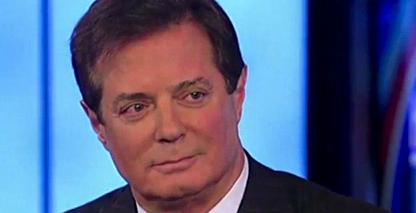
In just over a year, Mueller’s team has indicted over 30 people and organizations and received numerous guilty pleas. To put this in perspective, the Hillary Clinton email and Benghazi investigations went
The prevailing opinion of legal experts is that a sitting president cannot be indicted for any crime, even though there is no constitutional basis for it. In theory, Congress can bypass the need to indict President Trump by entering into impeachment proceedings. But given the current makeup of Congress, it is extremely unlikely that our representatives would do this.
The midterm elections are looming, and since so many of those elections can swing either way, most Democrats and Republicans are simply too afraid of losing their seats to make any serious calls for progress on impeachment proceedings for President Trump.
Ultimately, I do not believe that President Trump will be indicted for any crime, even if evidence strongly suggests that he has committed one. The support for the notion that a sitting president cannot be indicted, even though it is not grounded in the constitution, is simply too strong.
I also doubt Congress will impeach President Trump. His support from constituents is too great and if any Republican dared to speak out against him, it could mean political suicide. And without Republicans calling for impeachment, it is simply not a possibility.
The most plausible avenue in my estimate is that if he loses the 2020 election, he will be immediately indicted for a few crimes. If he wins re-election, we will unfortunately have to wait four more years for justice to take its course.
David Pietrow is a second-year student pursuing a Bachelor of Science in computer science with a minor in applied data science. He was once hit by a bus, so if his reporting of the facts are a little off, please be forgiving.
“ Ultimately, I do not believe that President Trump will be indicted for any crime, even if evidence strongly suggests that he has committed one. The support for the notion that a sitting president cannot be indicted, even though it is NOT grounded in the constitution, is simply too strong.”Letter to the Editor
News in a dying paper age
Asking The Real Questions
About a week before moving into my secondyear dorm at Case Western Reserve University, I visited my grandmother in my hometown of Pittsburgh, Pennsylvania. She brought to my attention a problem with her morning routine of reading the Pittsburgh Post Gazette, the city’s daily newspaper. She had been notified that the paper would no longer be printed on Tuesdays and Saturdays, in light of the digital takeover in the world of news shifting from paper to online editions.
If you hold the pleasure of having grandparents in today’s technological revolution, it’s probable that they’ve asked you at least once for help with technology— connecting to the internet, setting up a router or TV, and making the font on their smartphones as big as possible, just to name a few. It’s not easy to get someone who has read the physical paper for the majority of their life to “just read it online.”
I suspect it won’t be long until physical copies of newspapers become fully replaced by digital versions, and I have to say, it’s the right move. Sorry Grandma.
But why explain to you the discontent of many who read the daily newspaper only to disagree with them? The answer: “news is a conversation.”
This quote by Jeff Jarvis, a pioneer in
the world of digital news, intrigued me. Denise Polverine, director of Digital Strategy and Content for news station WKYC in Cleveland and professor of my introductory journalism class this semester, started off her lecture on the ethics of reporting with this quote. It describes why the move to digital journalism is so important and becoming more prevalent in news today.
What you don’t get with the daily newspaper or broadcast news station is a comments section - a place for the audience to be heard. It’s a way to start a conversation with people who may not have the same perspective on a headline as you.
There will never be a time that all of an audience agrees upon the ethics and presentation of a news story, so entering this digital age allows for opinions to be stated on a more visible platform.
In such a trusted network of media that provides transparency between people and their community, all sides of the story are important - not just that of the news. And while all forms of media strive to provide the most morally correct and ethical approach to their reporting, questions can still arise and conversations can, and should, be started.
We should be able to bring to light perspectives and issues that the news may have overlooked and let it be seen by the same audience who watch or read the original story.
Next time you read a news story online, scroll down to the comments section. A majority of the time you’ll find a new perspective to consider the article with. You may not agree with the side of the story being
Many newspapers are shifting to an online-only format. While printed news is appreciated by many older Americans, online news encourages greater conversation.

told or the perspective taken, and that’s all the more reason to take part in the conversation.
When comment sections aren’t available, platforms such as Facebook or Twitter showcase trending topics that open your eyes to perspectives of people from a broader variety of beliefs. While taking away a couple days of newspapers is the beginning of the end of a
strong era of news, its the reinforcement of the newer digital age that’s contributing to the transparency the news industry has always sought to provide.
Jason Richards is a second-year computer science major. He enjoys writing and journalism, building computers and eating Chipotle.

Things to do after the first week of classes
Paulina Martz Staff Columnist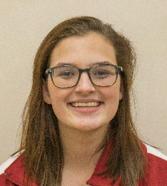
So the first week of classes is done and it may feel a bit (or incredibly) overwhelming. There are a few things you can do to reign in the anxiety and get a hold of the craziness.
The first thing you should do is pull out those syllabi, and if you’ve misplaced them, get them from Canvas. Then, sit down with your calendar of choice, whether that’s a big semester calendar, a small planner, or your phone, and enter everything. This includes things you think might be unimportant, or that you’ll be reminded of later. It’s good to have one common resource for all of the events in your life. Then add all your other activities and things you are signed up to participate.
Once that’s done, take a look at your life. Are there weeks where you have three papers and a test, or maybe where you get a little slack? Weeks where it seems like the world might cave in? Highlight them. Pick a color and highlight the weeks where everything is crazy in one color, the weeks where everything is calm in another. Set yourself reminders for a week before both the demanding and lenient weeks, just so you can keep track.
If you get one of those emptier periods, be sure to capitalize. Take advantage of the free time so you aren’t overloaded when things kick back up again.
Use these spare opportunities to reorganize your room. At this point you might have finally realized that putting
your textbooks under your bed because you’ve got some cool succulents on your desk is actually way more trouble than it’s worth. Or maybe you constantly keep misplacing your keys and a hook by the door might be helpful. Perhaps you usually get changed in the corner of the room across from your laundry hamper. Wouldn’t it be good if you moved it?
Aside from your room, you can also re-configure your eating schedule. Maybe you thought you’d have time to grab lunch during your 15 minute between-class-break, but it turns out it usually takes you 13 minutes just to walk to the other classroom. Try eating before, or maybe even pack a lunch.
But be sure you know how you’ll manage to pack a lunch. Will you do it the night before? Morning of? Use that new calendar you now have at your disposal. Sure, once it becomes routine you can stop setting an alarm every evening for 10pm. For now, mid-afternoon you will thank you.
You’ll also thank yourself down the road if you email your professors. The weeks over, you have a taste for the class, but if you have questions, comments, concerns, conflicts get telling your professor out of the way now. Not only will this guarantee you won’t forget about it later, when it might become a problem, it will also show them that you’re on top of your game and ready to start the year.
Finally, once you’ve done all of these tasks, take a nap. Getting everything ready for, and getting through, the first week of classes is daunting for anyone, not just first-years. You’re in a new residence hall, you’re with new people, you have a new schedule, and you have to walk through the Case quad multiple times while enduring the August heat. Give yourself a break, watch a movie,
The initial arrangement of your room could not be as great as you thought. Use free time early in the semester to reorganize it to better suit your needs.
read a book, or just eat some ice cream. Never take non-busy weekends for granted, and enjoy them as much as you possibly can.
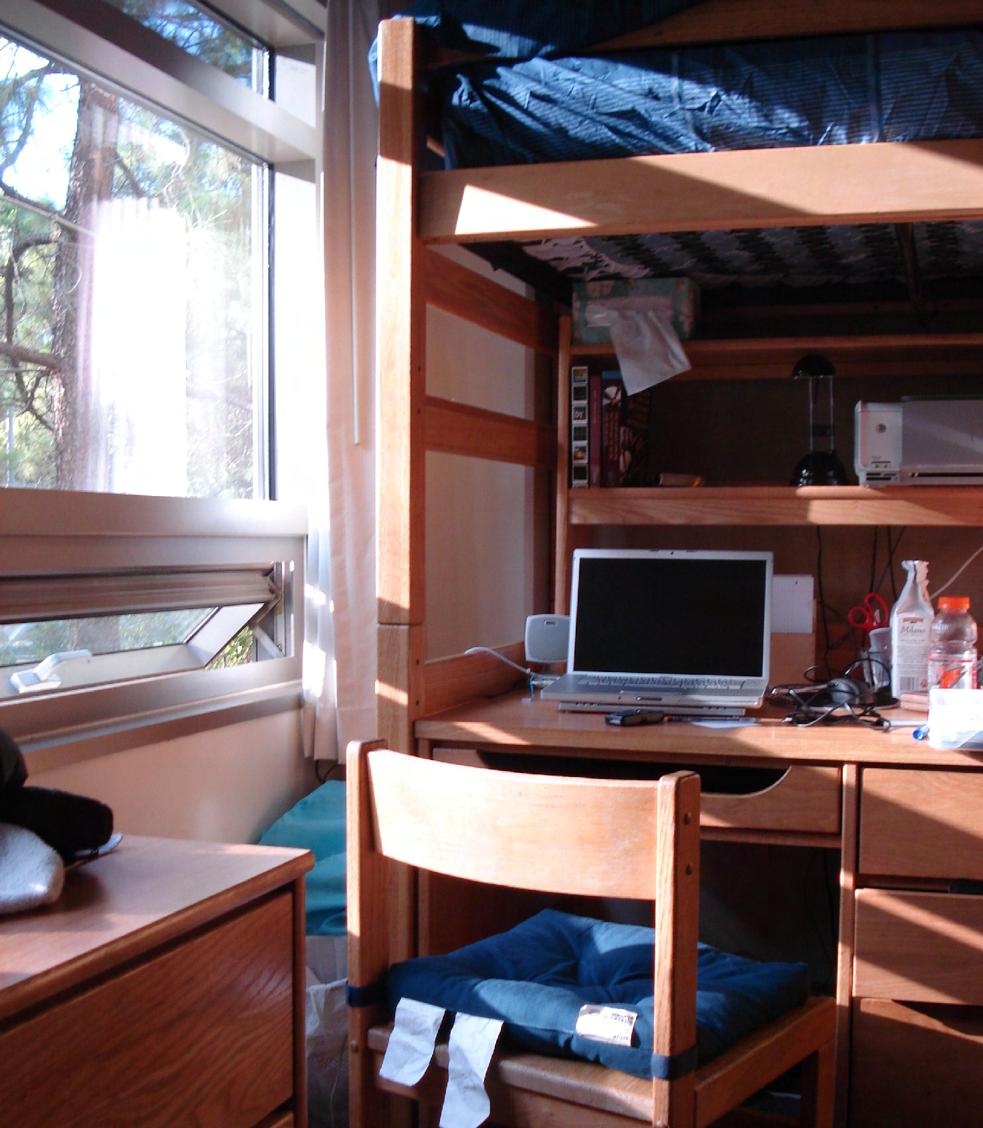
Fourth-year athletes share memories, advice
Riley Simko Contributing ReporterAfter three years at Case Western Reserve University, fourth-year student-athletes have a plethora of advice to share with incoming student-athletes. The veterans know all about balancing a full schedule and are more than willing to share what they’ve learned at CWRU—and not just in the classroom.
University Athletic Association (UAA) AllAcademic award winner and fourth-year soccer player Maggie Tyma said, “Being a studentathlete has definitely altered my experience at CWRU in a positive way. It has brought me lifelong friends from the moment I stepped foot on campus.”
Tyma summed up her athletic experience at CWRU well. She said, “Playing the sport I love and being around the teammates I love every day makes my college experience whole. I cannot imagine college any other way.”
Women’s cross country runner and 2017
All-Ohio Championship competitor Isa TorresPadin agreed, describing the “immediate sense of community” she felt when she joined CWRU athletics.
Fourth-year soccer player Emily Dickens found greater CWRU involvement through her experience on the soccer team. Dickens said, “Every outside organization I am involved in now is because a woman from the soccer team introduced me to it. This includes Theta Tau professional engineering fraternity, Phi Mu sorority, Student Turning Point Society and the Think Energy Fellowship program. Being a student-athlete [has] given me the opportunity to get a full experience at CWRU.”
While Tyma and Dickens cited positive experiences, they noted that time management could be difficult at times. Student-athletes need to balance not only school work, clubs and social life but their practice and playing schedules as well.
many people at CWRU tend to overload their schedules, and athletics is one thing that I have in my busy schedule,” Sears said. “If I wasn’t an athlete, I would still have to find time to exercise, so why not participate in a sport that I enjoy while making lifelong friends? I also work 10-15 hours during the week, so most of my studying has to be done at night, on the weekends and on the bus to or from a meet.”
“This balance is not always easy but always worth it,” Dickens said.
Going into her final season on the cross country team, Torres-Padin said, “It feels bittersweet” but “it also feels exciting to see that we have so much talent not only in the senior class, but in all the younger girls and the prospect of such a strong team for my final year is an amazing feeling.”
Tyma enters her final season as a forward on the women’s soccer team resolved to play her heart out. “Going into my last season I feel more determined than ever before. I am determined to make it my best and to give it absolutely everything I have,” she said.
Looking back over their careers, the athletes thought about what they wished they had known as incoming players and students at CWRU.
Torres-Padin advises above all else “to try to achieve balance—not only when it comes to school and athletics, but with friends and finding activities you enjoy.”
Robert Iriye, a fourth-year cross country runner, shared his best advice for new CWRU athletes. He said, “Make smart goals for each season. I wasn’t the fastest guy coming into college, but I’ve set goals along the way to help me continue to grow as an athlete.”
For Tyma, soccer has been a lifelong passion, and she urges incoming athletes to “give as much to the sport as it gives you and never take a day for granted.”
Dickens agreed with Tyma.
Athlete Spotlight
Second-year
volleyball player unexpectedly finds her passion
Niko Kamlet Staff ReporterSometimes complete accidents inspire the greatest revelations. Second-year outside hitter Bailey Hagedorn never anticipated playing volleyball. As a kid, she was involved in individual activities such as ice skating, gymnastics and piano—not exactly similar to volleyball. In fact, Hagedorn did not start playing volleyball until seventh grade, when her school required her to join a sport. The rest is now history. She fell in love with the hustle mentality and team aspect of the game.
Hagedorn is familiar with the concept that the team always comes first. In volleyball, communication and in-game adjustment are crucial for success, and these values have contributed to the formation of strong bonds with her teammates.
“The relationships and bonds you form with teammates form quicker and often times stronger than other off-the-court friendships,” she said.
Those friendships led to Hagedorn’s once-in-a-lifetime trip to Spain with the Case Western Reserve University volleyball team. Traveling across the world with the team was a special adventure. The trip was a great opportunity for her to meet volleyball players from a different country while also testing her Spanish.

Hagedorn wasted no time finding her way into matches at CWRU, playing in 22 as a first-year player. Over the course of the season, Hagedorn accumulated 38 kills, 21 digs and 11 total blocks.
Off the court, Hagedorn is active in
Phi Mu, where she is currently the house manager, and in Theta Tau where she is the fundraising chair. She is especially excited about the latter position so she can implement fundraisers at Chipotle and Happy Dog, along with revitalizing the “Recycle Regatta,” an annual philanthropy event. Additionally, she participates in on-campus research and volunteers at Severance Hall in the off-season.
Now in her second year on the chemical engineering track, Hagedorn is eager to begin new classes. She wants to go into chemical engineering because of her fascination with chemistry and her constant desire to apply the concepts to the real world.
“Although a bit naive, I truly hope that I will be able to change the world. My ultimate goal for my education is to give myself the knowledge and opportunity to solve realworld problems and improve people’s lives,” Hagedorn explained.
Although her free time is limited because of volleyball, engineering classes and other extracurriculars, Hagedorn recently developed a love for baking. Mostly on weekends and during breaks, she tries new recipes to satisfy her sweet tooth. To relax, Hagedorn has also started journaling to release and reflect on thoughts and emotions even on overwhelming days.
If you ever meet Hagedorn, one of the first things that will strike you is her positive attitude. She loves the quote, “Attitude is a little thing that makes a big difference.” She explained that enjoyability of life is not simply based on the things you have but rather how you react to certain situations.
She ended by saying, “Attitude is a decision, and having a positive one is something I strive for each day when I get out of bed.”
Ellen Sears, a fourth-year on the women’s cross country team, added that “I think that
“My biggest advice may seem cliche but I believe it to be true: be grateful for each experience you have as a collegiate athlete because it is rare and your time is limited,” she said.
Cross country, tennis teams get on track for new season
Liu said.
David Chang Staff Reporterwhere will you go?
As the steamy summer weather comes to a close, the Case Western Reserve University cross country and tennis teams will embrace the chilly weather and prepare for their upcoming seasons.
Now with another year of experience under their belt, the men’s tennis team, composed of 18 student-athletes, will look to improve their solid 17-10 record, with losses only to nationally ranked opponents. Third-year players Anthony Kanam and Sam Concannon received All-University Athletic Association (UAA) Second Team honors last season and will look to lead the young team to more victories this season.
The women’s tennis team lost Nithya Kanagasegar to graduation. Kanagasegar ranked in the top 40 players in NCAA Division III last year and made the quarterfinals with now second-year student Madeline Paolucci. Second-year student Nicole Cardwell, who earned UAA Honorable Mention at second doubles, will lead the young Spartans to another strong season.
Fourth-year student Jessie Liu anticipates the team will get better throughout the season.
“I feel like our teamwork and support for each other is one of the strongest aspects of our team and will help us succeed this season,”
Both tennis teams received the Intercollegiate Tennis Association (ITA) AllAcademic Team award, while eight members of the men’s team and six members of the women’s team were recognized as ITA scholar athletes, which requires a grade point average of 3.5 or above.
The men’s cross country team will sorely miss now-graduated two-time All-American Sam Merriman, who finished 11th at the NCAA Division III Championships and set the school record in the 8,000-meter run with a time of 24:37.00. Third-year runner Andrew Green will look to lead the team with his consistent 27 minute 8,000 meter finishes and top-seven team finishes.
Last year, Danielle Kulpins was the top Spartan finisher in six of the seven races and finished 17th at the All-Great Lakes Regionals. Third-year runner Madeline Lindemann, who finished 11th in the UAA Championships and received All-UAA Second Team honors, will look to lead the team with fourth-year runners Isa Torres-Padin and Jennifer Hoffman and third-year runner Vanessa Pasadyn.
The cross country teams will compete at the Sundeck Sunset Classic Stampede in Chagrin Falls, Ohio on Aug. 31. The women’s tennis team will begin their fall season at the Oberlin Invitational on Sept. 7, while the men’s team will compete in the Kenyon Invitational on beginning Sept. 8.
Volleyball aims to turn potential into production
Andrew Ford Sports EditorAfter a strong 19-12 campaign a year ago, the Case Western Reserve University volleyball team is ready to reach, and, hopefully, surpass, the 20 win mark this season.

Last year the team was very young, sporting only one fourth-year player and three third-year contributors. Although the team still carries a youthful squad with only three fourth-year students, they feel they are ready to compete at the highest level this year.
“Our returning group is stronger: physically stronger, technically stronger, and more confident than I’ve seen us in awhile,” Head Coach Karen Farrell said. “We have very high expectations for this group.”
The Spartans are essentially returning their entire core from last season. Thirdyear outside hitter Brianna Lemon and third-year middle hitter Haley Sims earned All-University Athletic Association (UAA) First Team and AllUAA Second Team honors, respectively. Second-year middle hitter Katie Kaminski was an All-UAA Honorable Mention after her tremendous second half of the season.
Lemon led the team in kills and was fifth in the UAA in kills per set. However, she showed her ability to play everywhere on the court by also leading the team in digs. Sims was solid at the net defensively, finishing tied for third in the conference in solo blocks. Kaminski led the team in kill percentage, a testament to her efficiency on the offensive end.
Additionally, fourth-year defensive specialists Noel Jeansonne, Karina Bondelid and Emily Wolfenbarger will provide veteran leadership in the back row.
Third-year setter Faith Ellis and third-year outside hitter Karley King both had excellent seasons a year ago
and will be key contributors again this year. Ellis was the main setter for the team and was one of the best in the UAA, while King was a primary option for Ellis at the net.
The Spartans also add four new firstyear students and a new second-year player who will challenge for starting positions.
“I’m hopeful they’ll challenge for the rotation,” Farrell said. “They bring a lot of talent, it’s just how quickly they become more confident within our system.”
Perhaps the biggest competition will take place at the setter position. The team’s system uses two setters, and with Ellis locked in as the first setter, there will be a three-way battle to earn the second spot.
Second-year setter Jiayi Shen comes in with the most experience, but her playing time diminished last year as Farrell found it better to just play Ellis as a lone setter. However, Ellis is listed at five feet six inches, so when the rotation puts her in the front row the team loses that critical third blocker at the net.
Second-year setter Krystal Wang is another option. She was on the team last year but did not receive significant playing time. The final option is secondyear Jordyn Harberts. After a year with club volleyball, Harberts decided she wanted a higher level of competition and was able to make the team.
This year the Spartans hope to finish in the top three of their conference after a fifth place finish last season. Farrell also mentioned that she would like to be in contention for a berth to the NCAA Tournament.
“Teams are going to have to bring their best efforts and have the talent to outplay us. I feel this is one of the stronger groups of players we’ve ever put together,” Farrell said.
However, if anything is going to hold them back from what they want to become, according to Farrell it will be a “lack of game experience in a couple of positions.” They also need to develop a level of urgency to win every match, a mental hurdle they struggled to overcome at times last year.
But with loads of potential, it is time for the Spartans to capitalize on the talent they have and make a historic run.
The season opens at the Ohio Northern Tournament on August 31. But the team had one last tune-up on August 24 against CWRU volleyball alumni in the team’s annual alumni match. Every year, players of teams in the past unite to scrimmage against the current varsity squad. The game is a tremendous opportunity for players, past and present alike, to connect around the sport they love.
“It is a great opportunity for our current team to better understand their place on the spectrum of the volleyball program and to hear about the achievements of our past teams,” Farrell said. “We always have a number of different eras represented so it is fun for our former players to reconnect with teammates as well as meet new people... It is very important that we keep them connected and our annual event is always a great springboard for our team to kick off the season.”
Football looks to repeat last year’s success with new faces
Sanjay Annigeri Staff ReporterAfter a perfect regular season and a trip to the NCAA Division III playoffs capping off last season, the Case Western Reserve University football team is looking to repeat their success this year. However, the class responsible for the impressive campaign has graduated.
“We focused on team building and leadership building,” Head Coach Greg Debeljak said. “We have a young team trying to replace 26 graduating [fourthyear players], many of which were key
players for us over the last [three] years. We have talent, but we need to mature quickly in order to win at a high level this year.”
These players definitely will have to mature quickly, as last year the CWRU offense averaged about 40 points and 437 yards per game while the defense suffocated opposing teams by allowing a mere 17.8 points per game.
Debeljak has confidence in his team.
“I feel we have strong leadership from our [fourth-year] captains (Steven Bachie, Cameron Brown, and Joey Spitali) as well as a pair of [fifth-year] players (Giuseppe Orsini and Luke DiFrancesco). They are all [three to
four] year starters and have played a great deal of games for us and know what it takes to win,” he said.
Along with the leadership of the captains, the lead signal caller for the Spartans will change as quarterback Rob Cuda has graduated.
Cuda, a dual-threat quarterback who threw for 7,883 yards and ran for 2,128 yards during his four years on the team, accounted for the deadliness of the Spartans offense in both the running and passing game. He also threw 77 touchdowns in his career with only 23 interceptions.
Replacing that level of production seems like a monumental task, but Debeljak feels good about his
quarterback competition.
“[Third-year] Ryan Coolidge and [first-year] Drew Saxton have stood out in pre-season camp. We feel we possess two [quarterbacks] that can help us score points offensively in different ways and will use their skills accordingly,” he said.
Returning for the Spartans is fourthyear receiver Justin Phan, who led the team in receiving yards and receptions. But other than Phan, there will be a host of new playmakers all over the field who will look to continue the success of the CWRU program.
The team will open the season at home against the University of Rochester on Saturday, Sept. 1 at 7 p.m.
